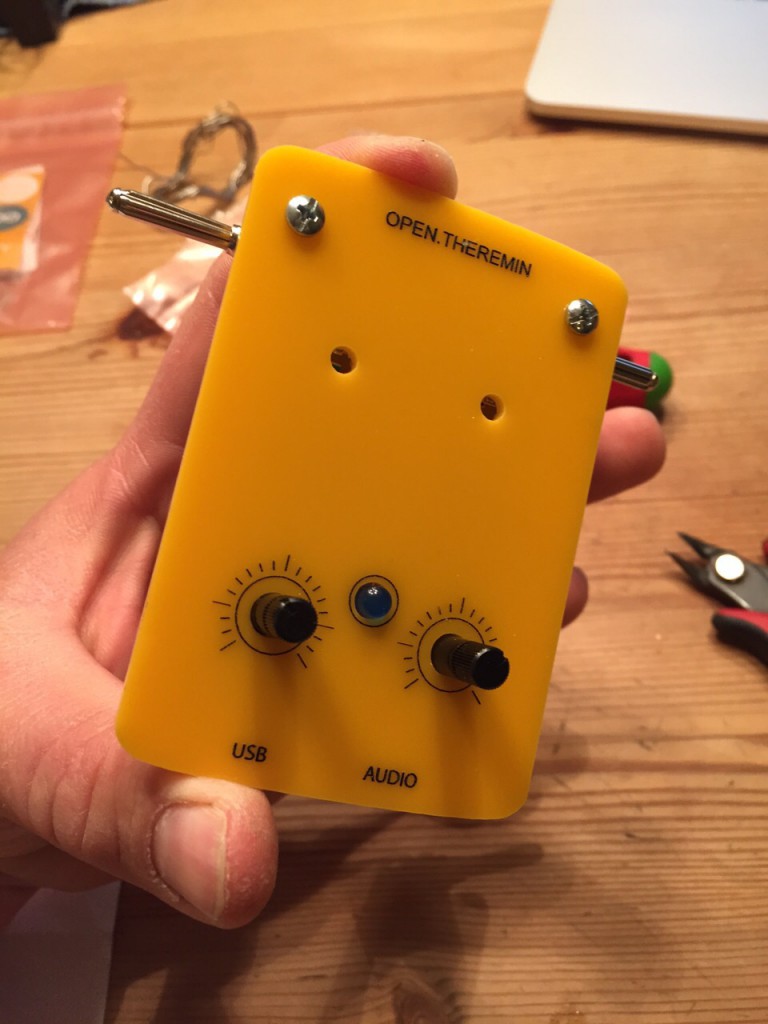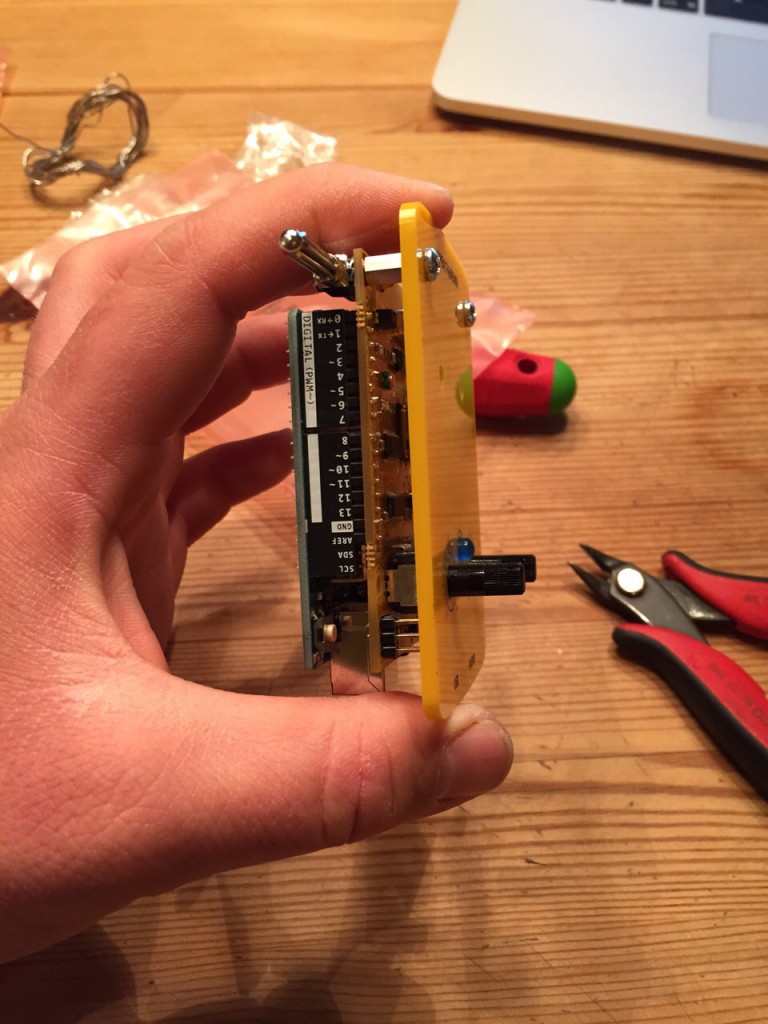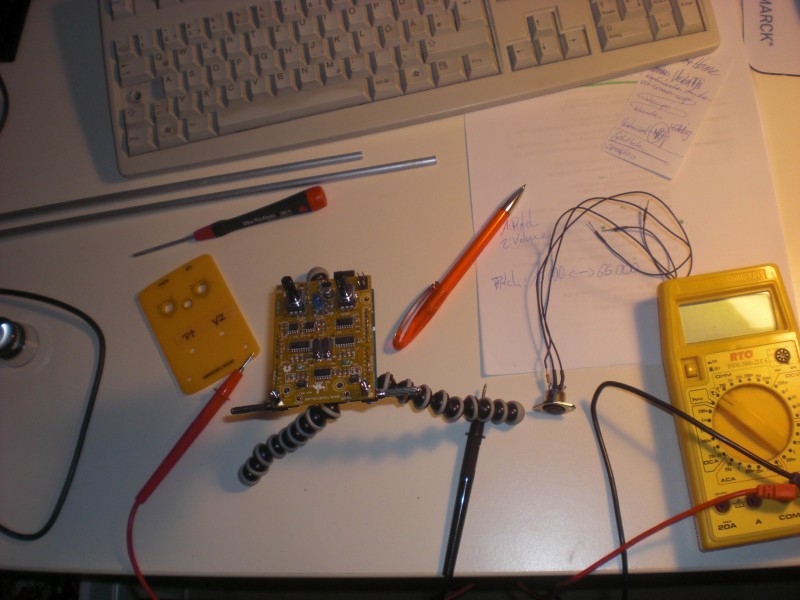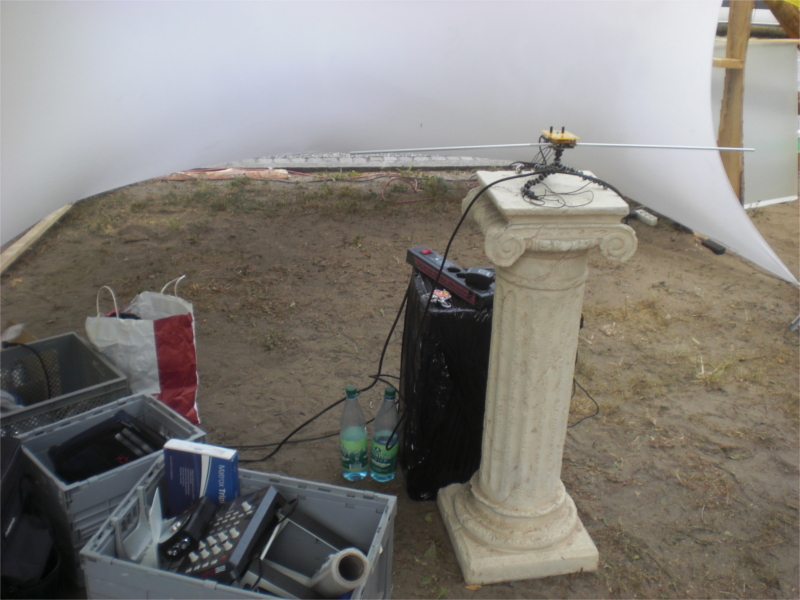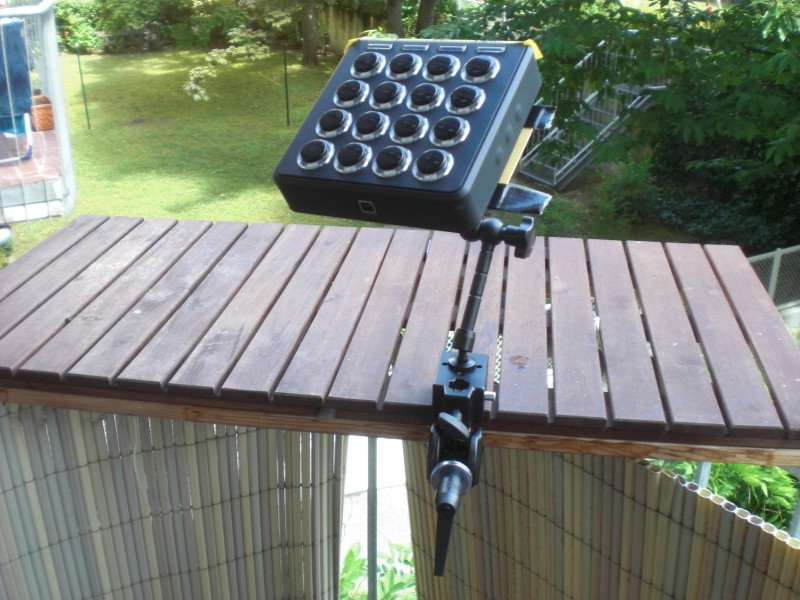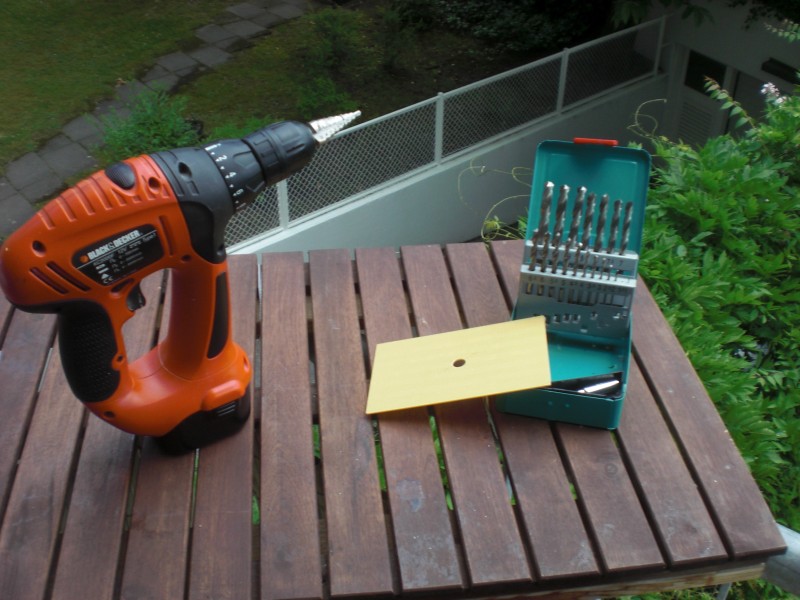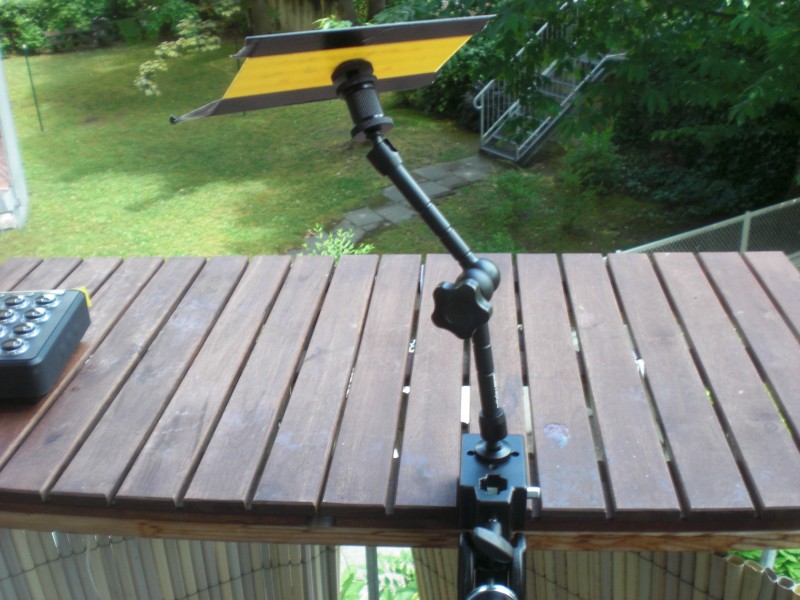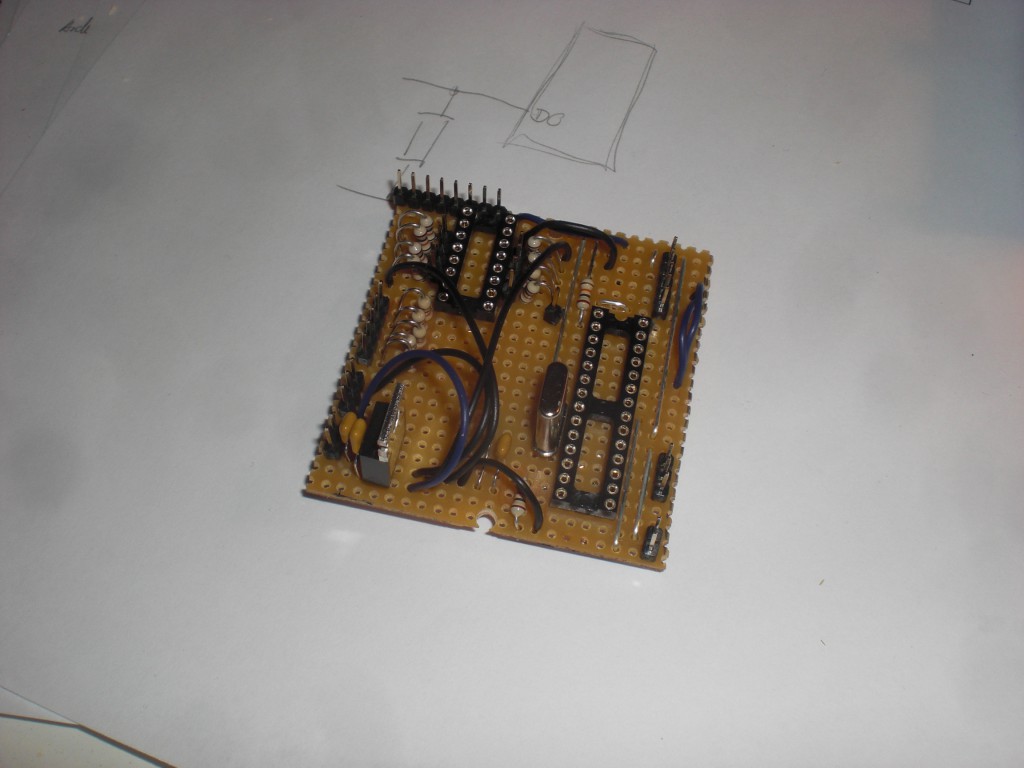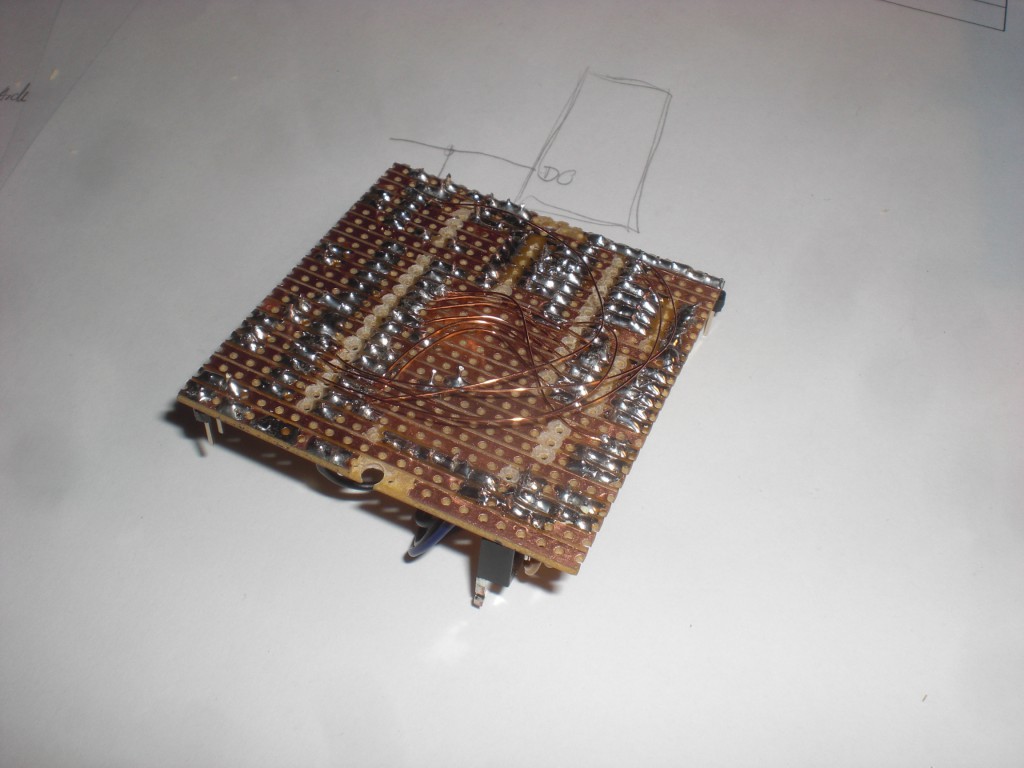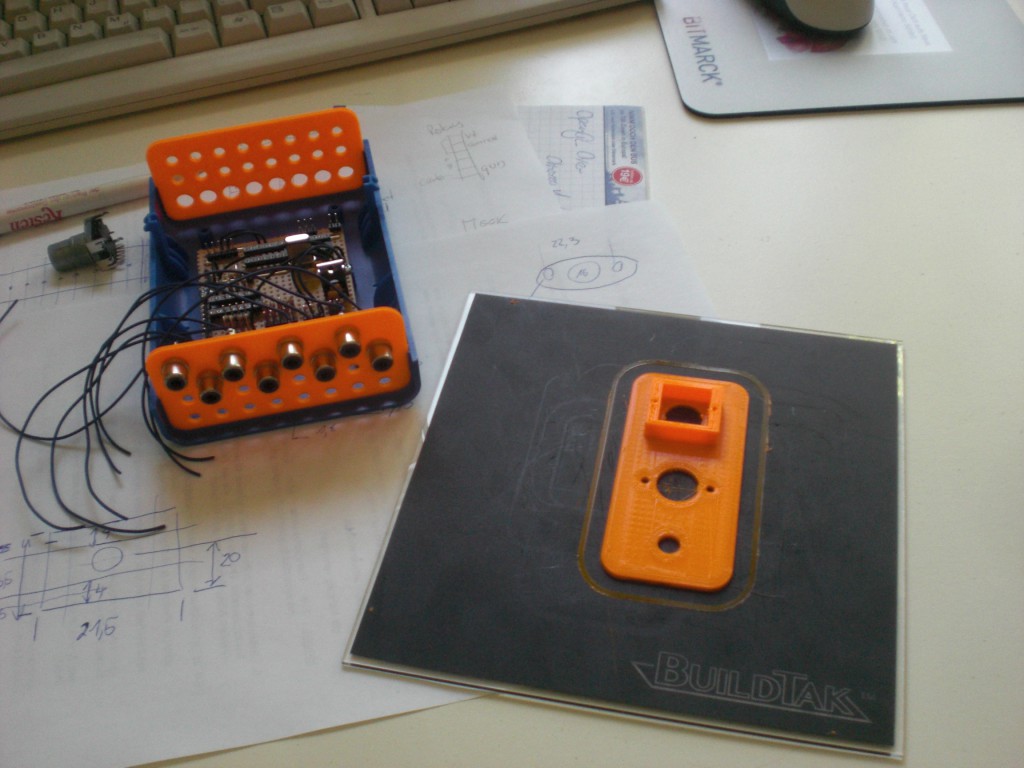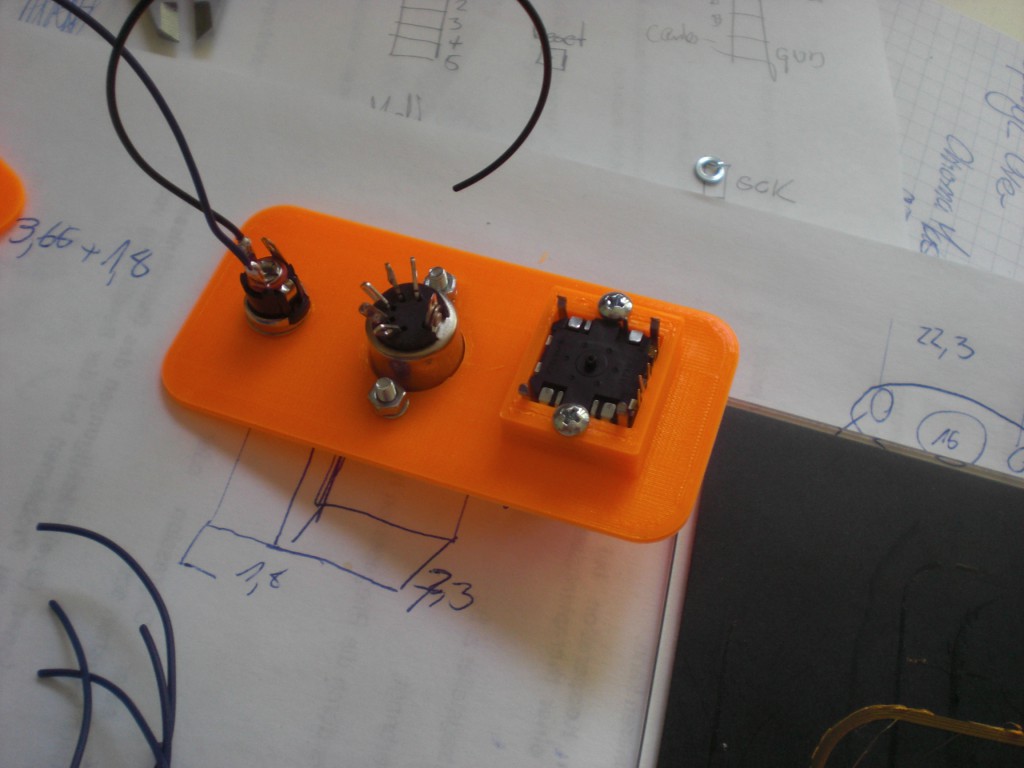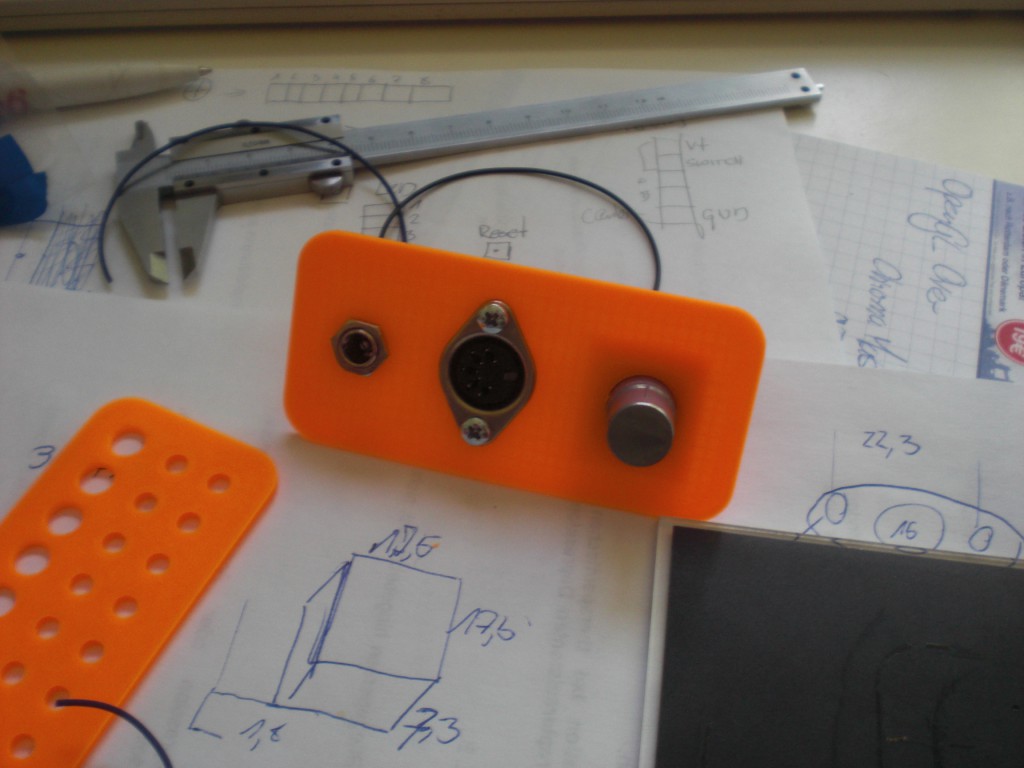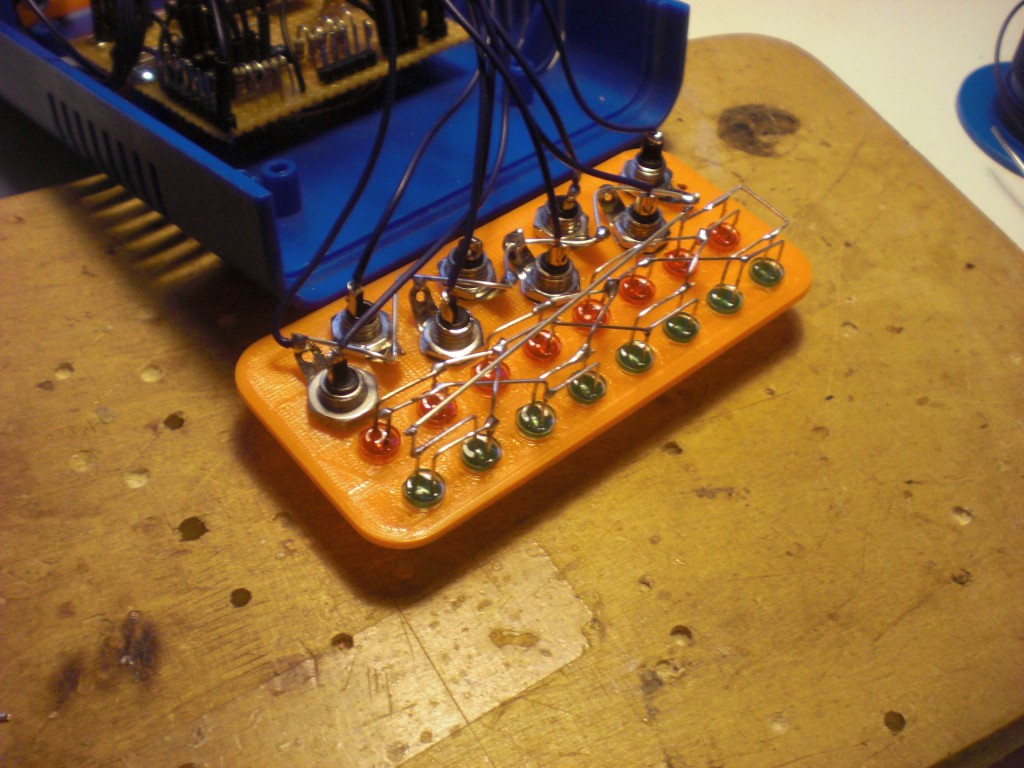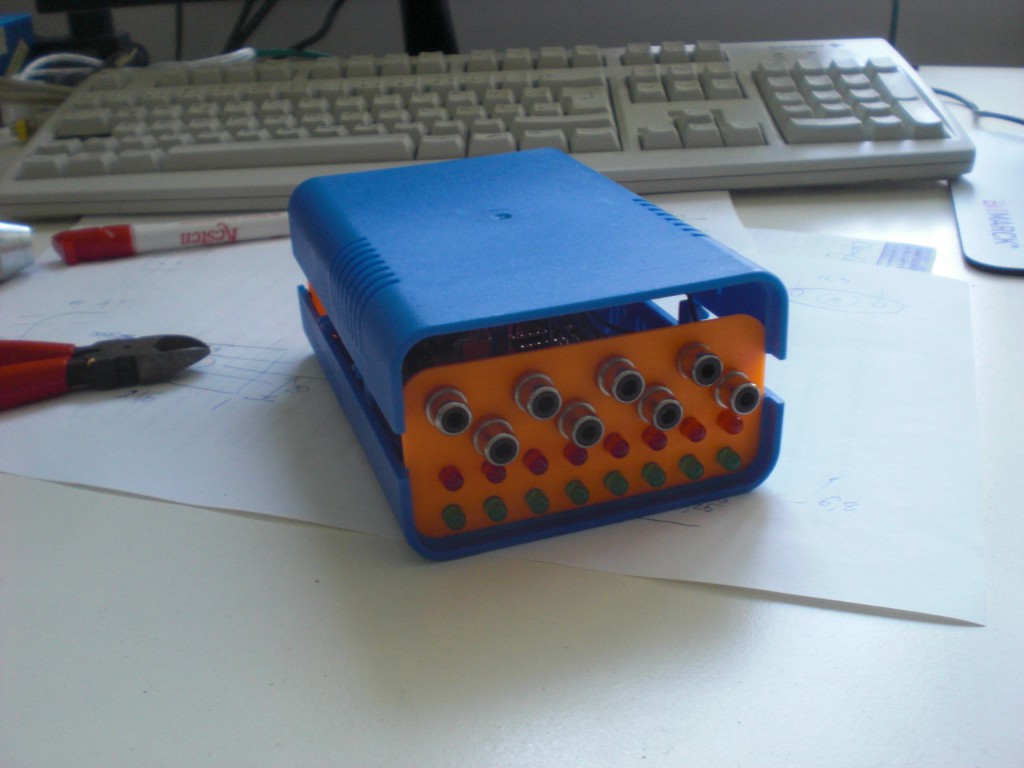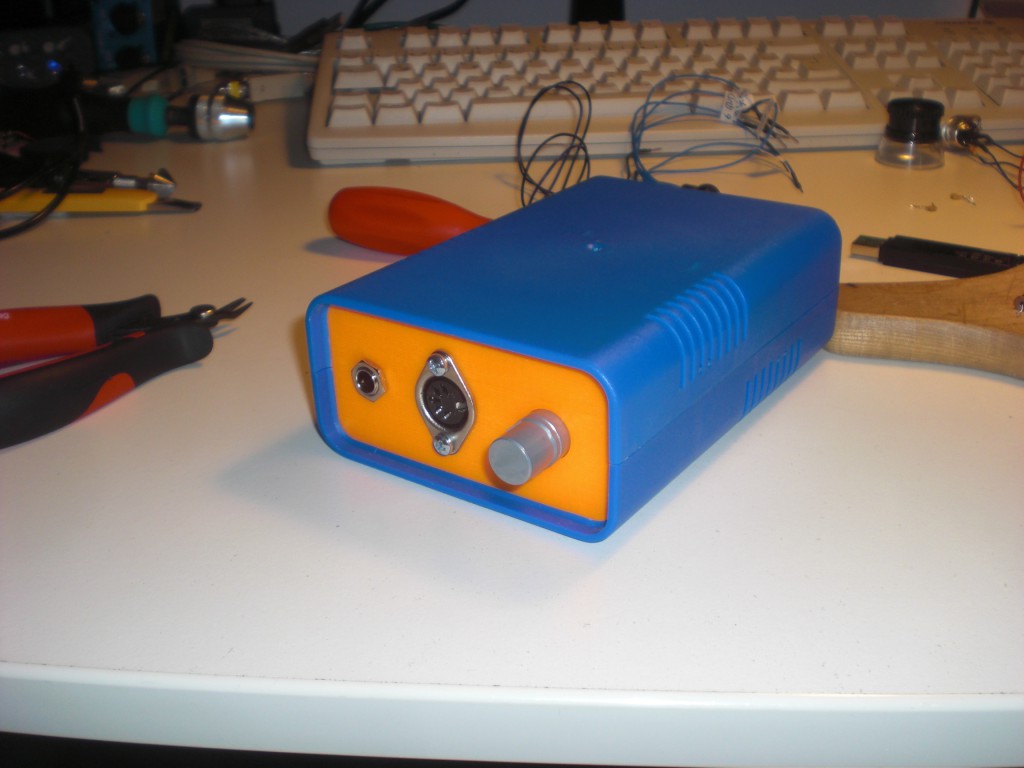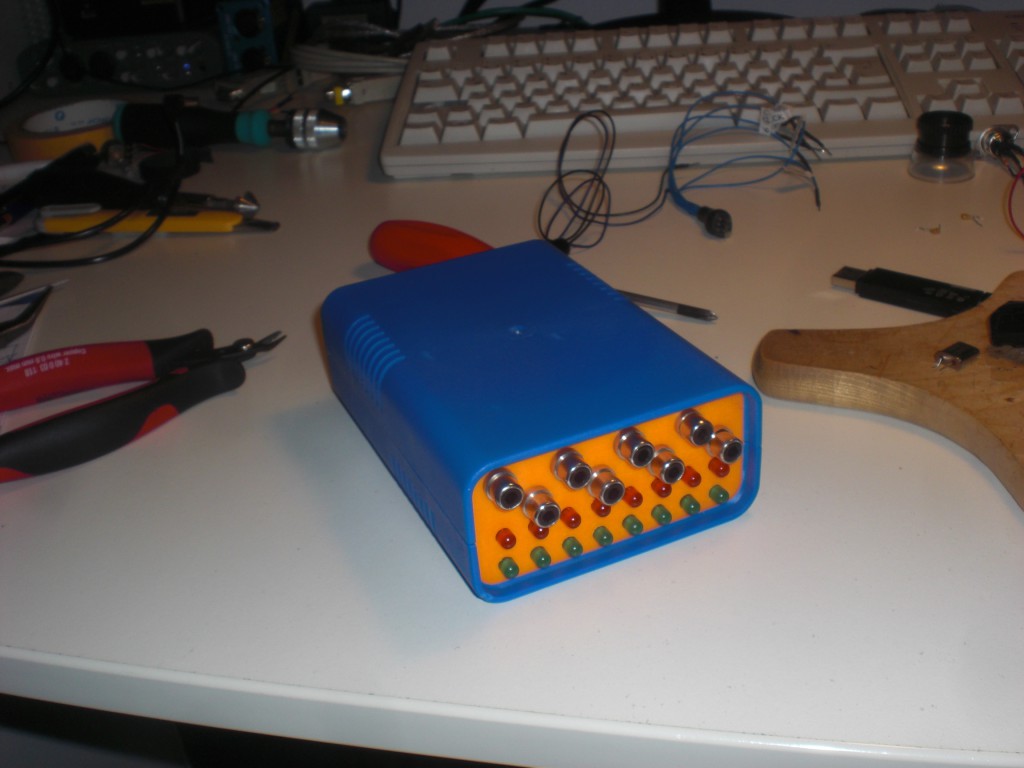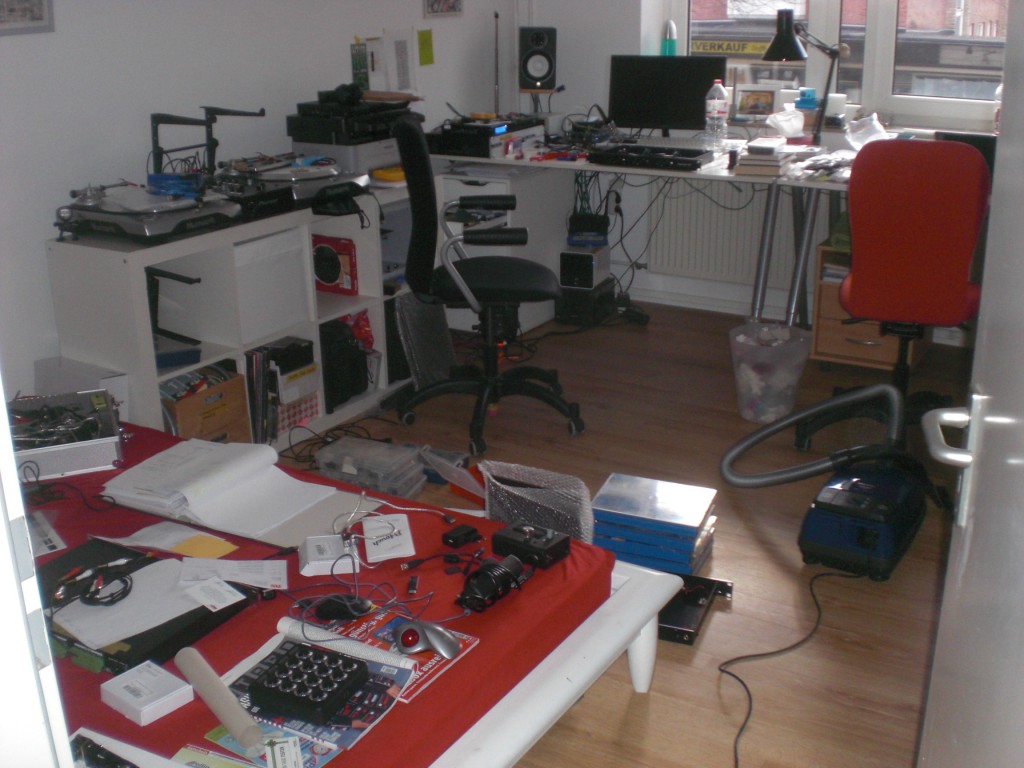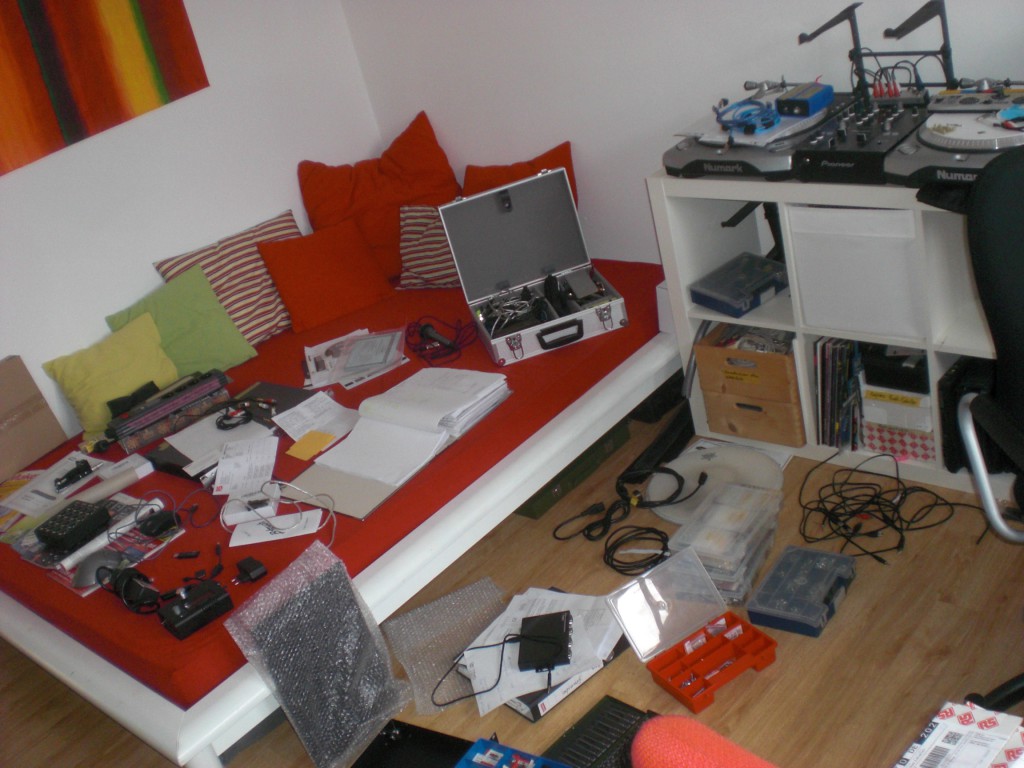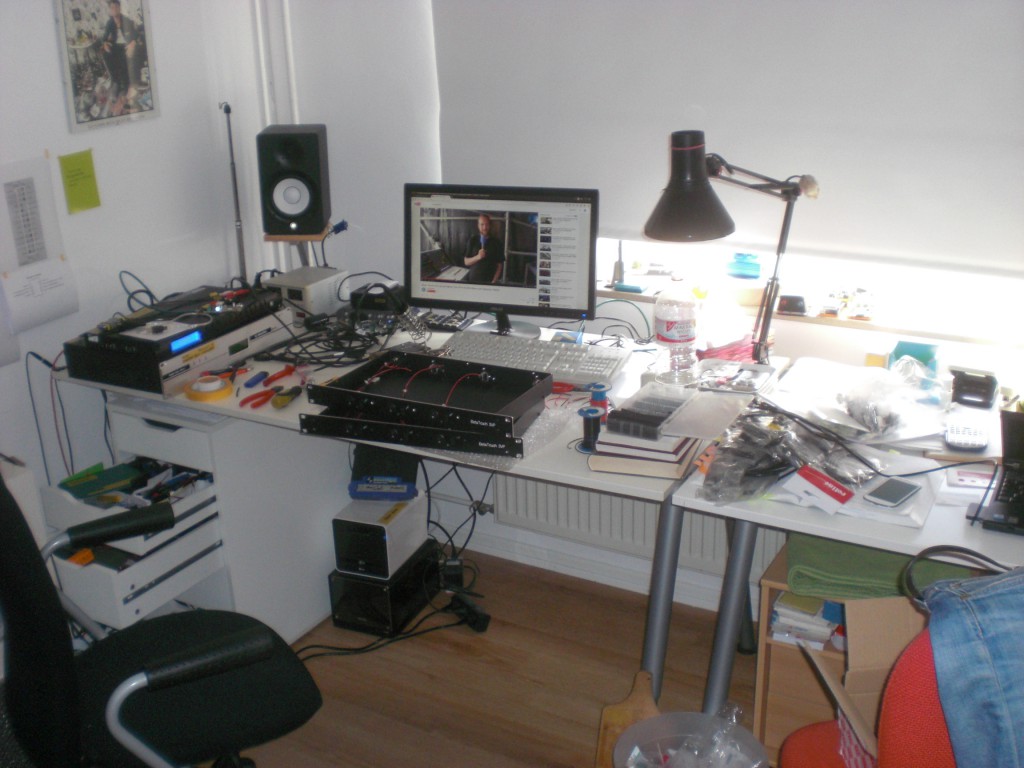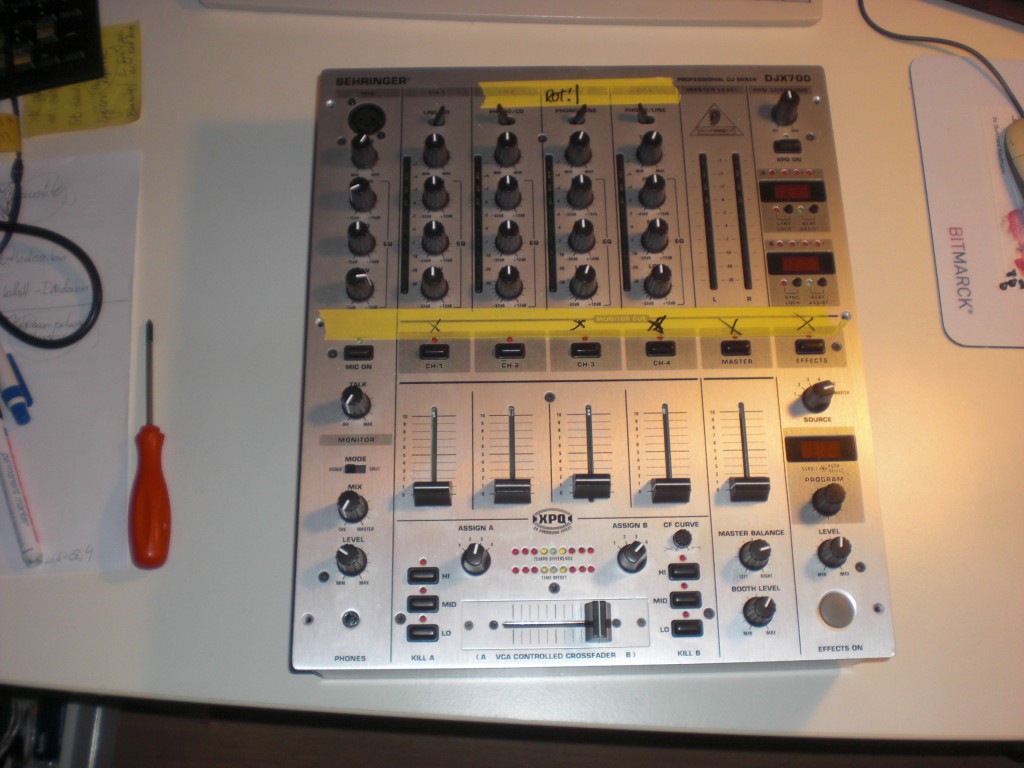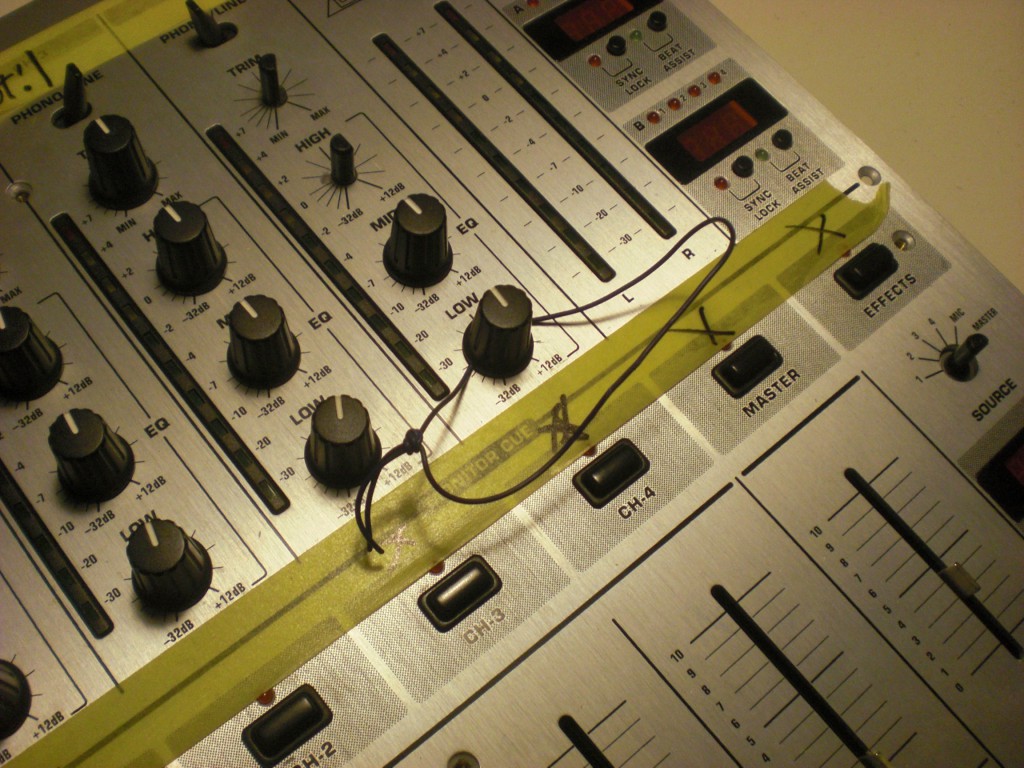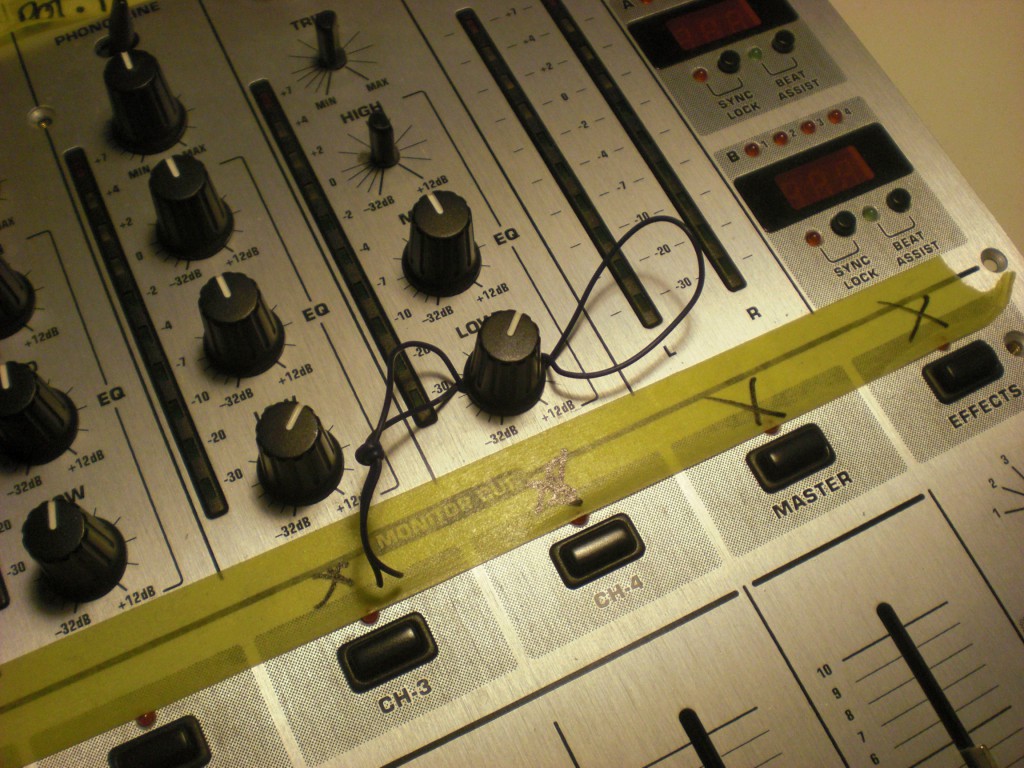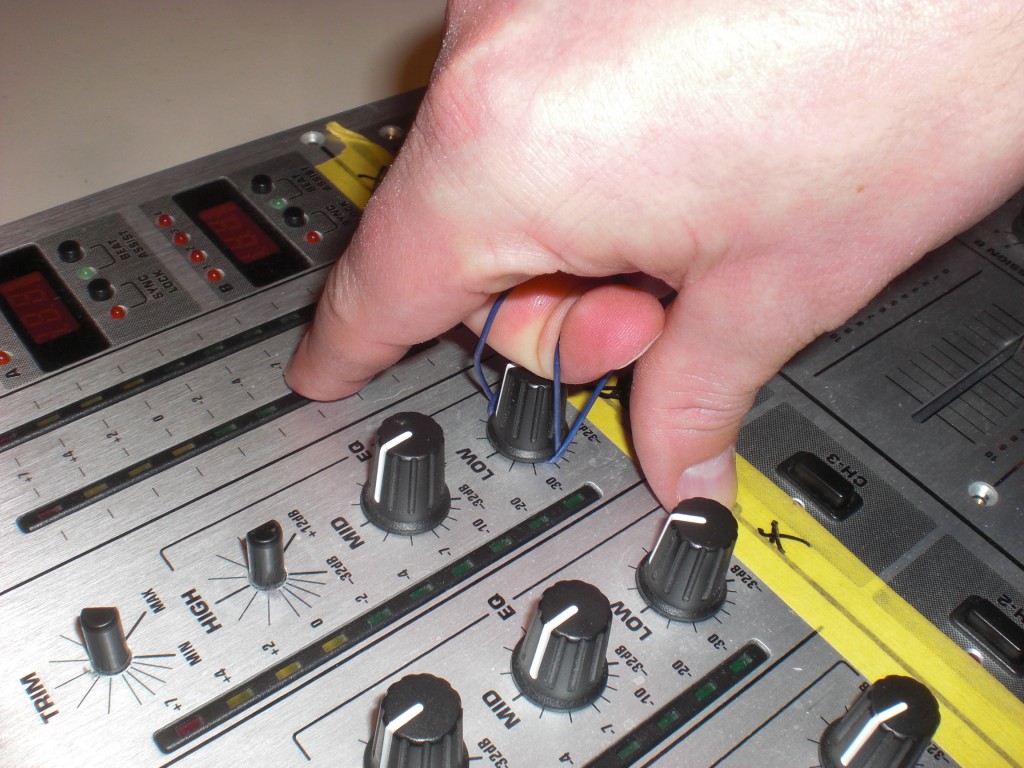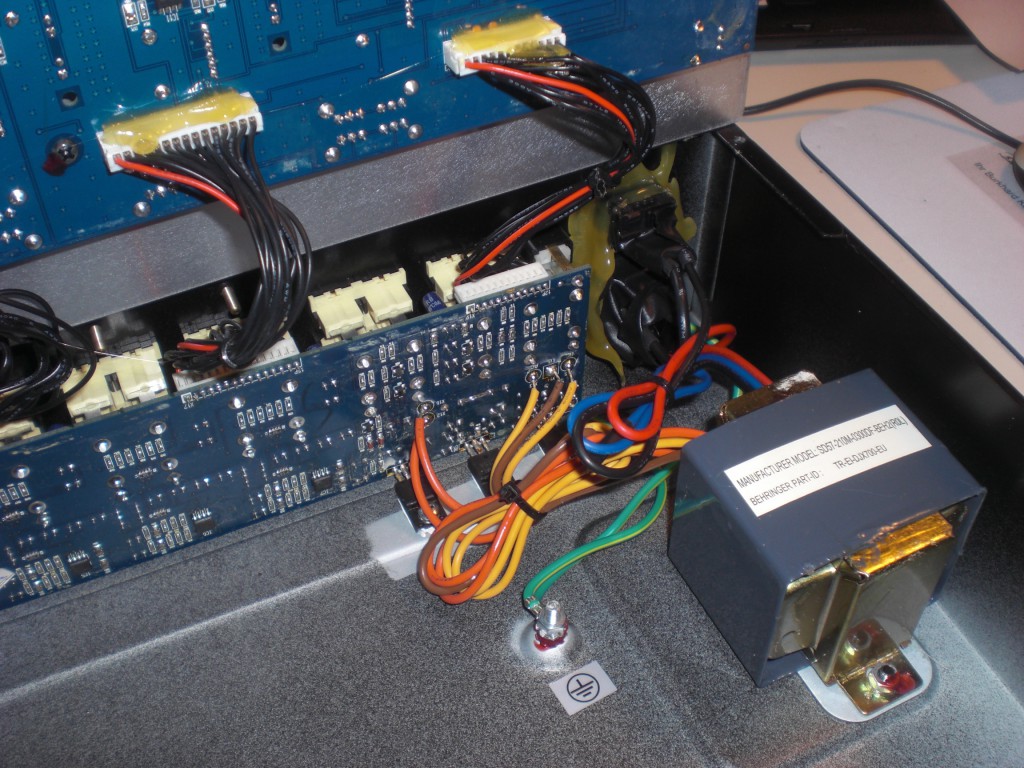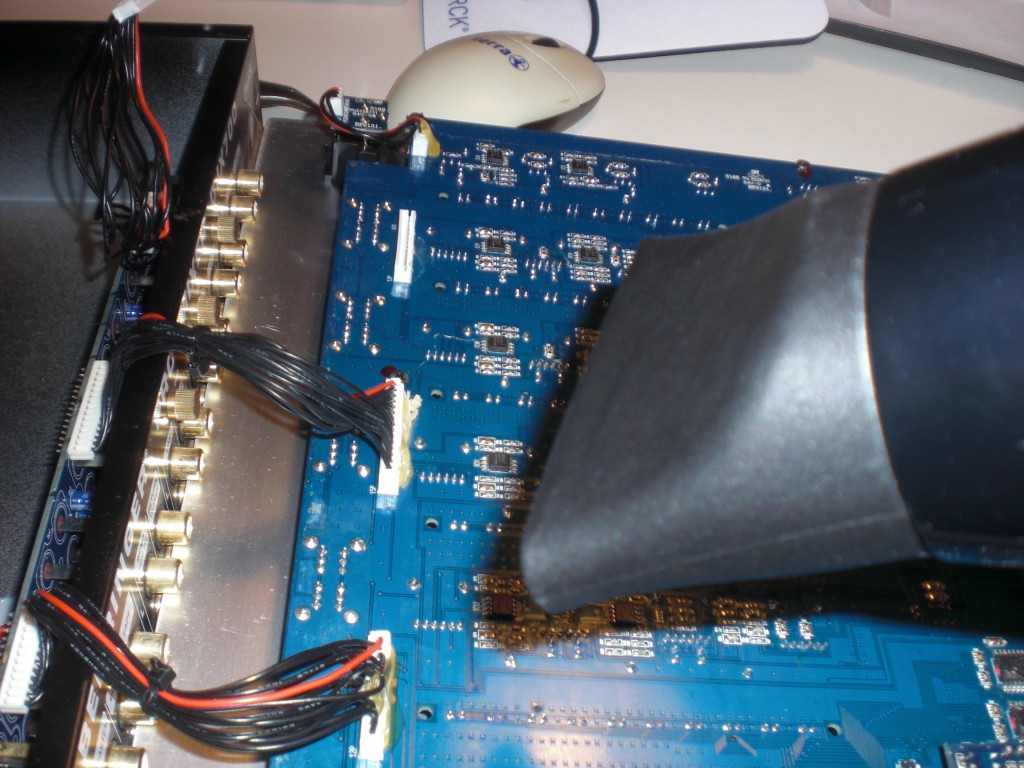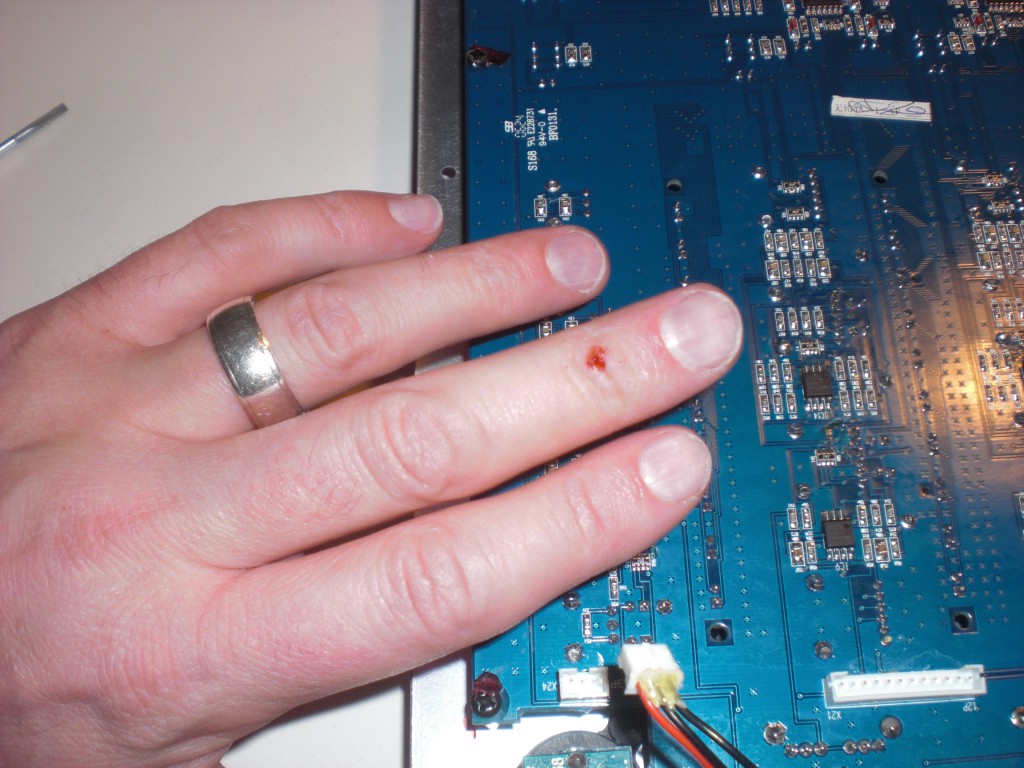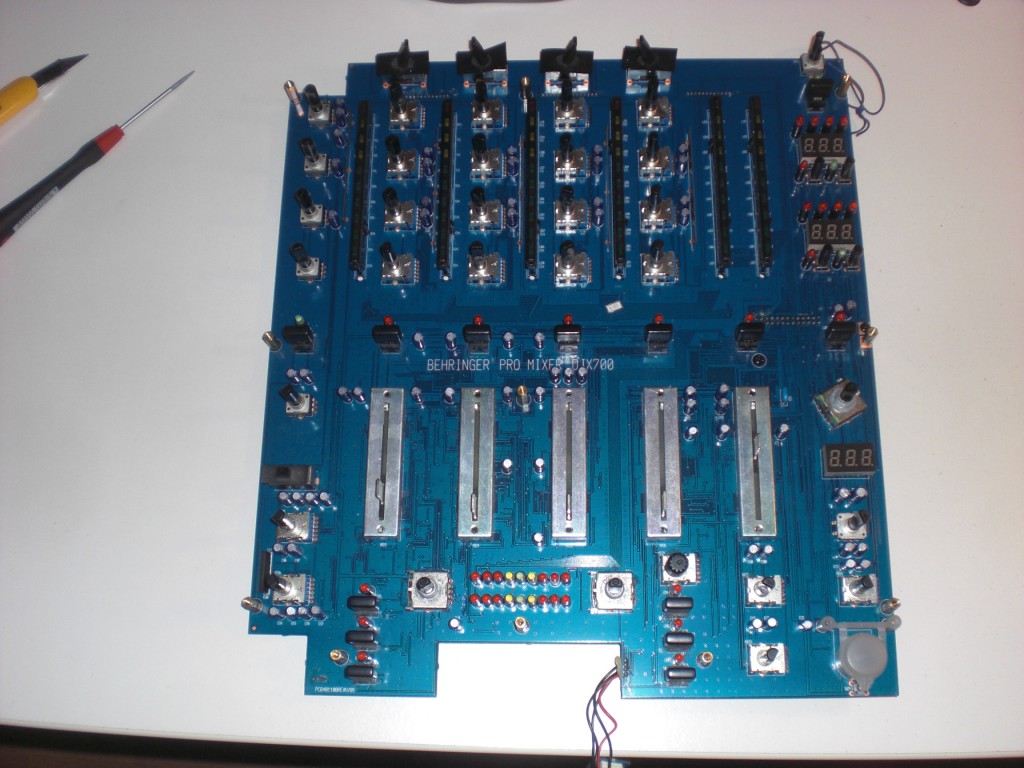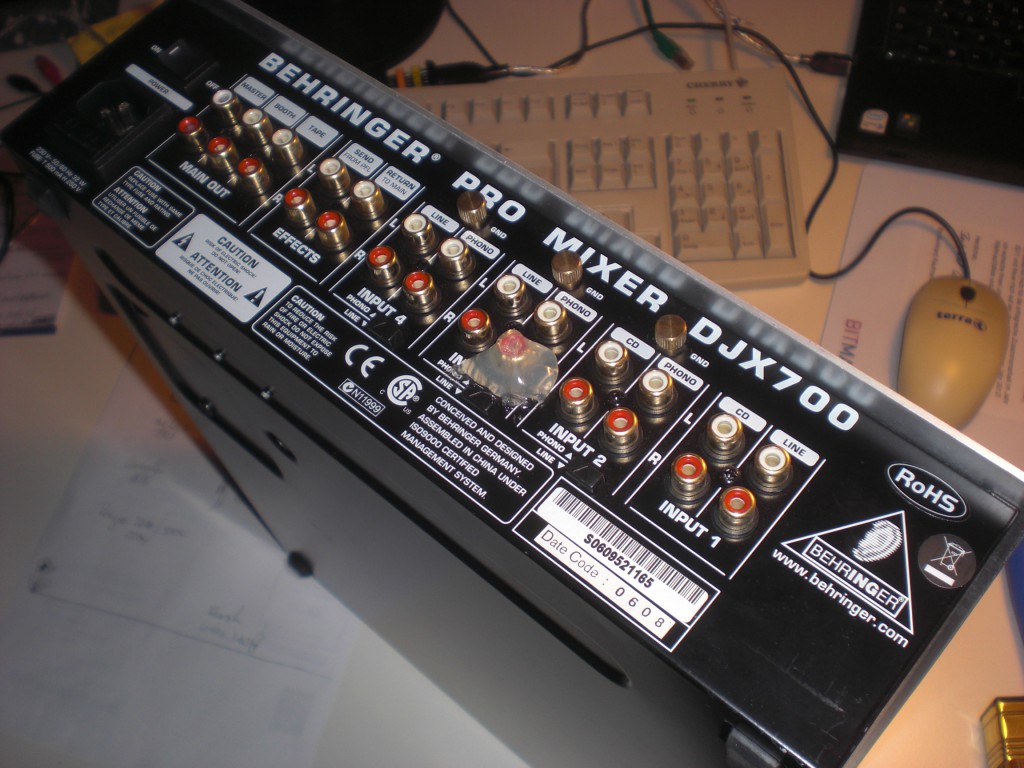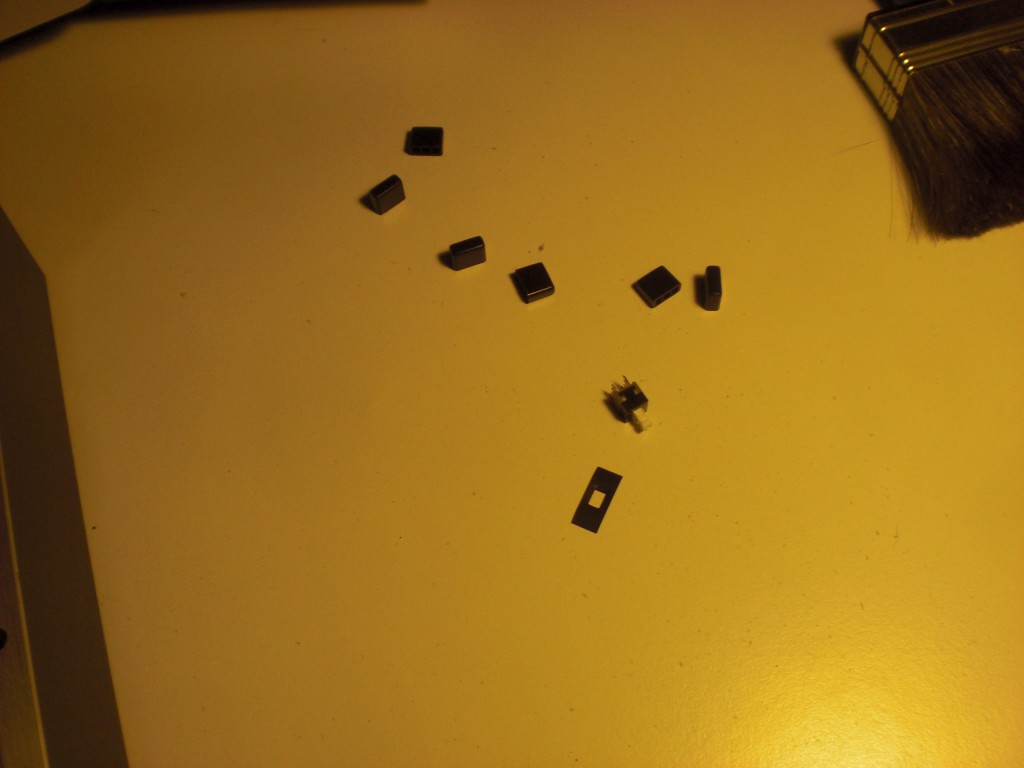Genau. Prolight+Sound 2015. Und genau DAS ist der Grund, warum hier in den letzten Jahren Monaten so gut wie gar nichts passiert ist.
Ich arbeite seit circa 7 Jahren an ~einem Projekt~. In den letzten 2 Jahren hat sich die ganze Sache nochmal konkretisiert und seit Dezember 2014 war klar, dass wir als Aussteller zur Prolight+Sound fahren. Seitdem gab es hier sowieso keine freie Minute mehr und meine gesamte freie Zeit ist in die Entwicklung des Produkts und die Vorbereitung der Messe geflossen.
Wer sich jetzt wundert, warum man 7 Jahre an einem Projekt sitzt und quasi 5 davon nicht richtig zu rande kommt, dem sei hier gesagt, dass das natürlich alles parallel zu meinem ‘echten’ Leben stattfindet. Dazu noch Ärger mit ehemaligen ‘Geschäftspartnern’ und ausserdem -und das ist kein Witz- waren wir vom groben Konzept schon 2008 so weit, wie heute; allein: Der Markt war fühlbar noch nicht bereit dafür. Nun isses aber soweit und wir müssen unser Kram den Leuten nicht mehr anbieten wie Sauerbier, sondern stoßen auf echtes Interesse.
Nur kurz: Es handelt sich um eine Lösung, um AudioVideoLicht-Settings für Nicht-Techniker bedienbar zu machen (und so abzusichern, dass Dein Cocktailmixer-Ich-bin-auch-DJ-Kumpel nicht die Settings versauen kann). Natürlich mit einer Möglichkeit, das alles von mehreren Räumen aus zu erledigen, etc. Ganz nebenbei haben wir eine enorm geniale HDMI-Matrix am Start und alles passt so richtig gut zusammen. Das Thema wird hier erst einmal nicht weiter breitgetreten. Mehr Info dazu gibt es auf der offiziellen Seite: www.BetaTouch.de
Egal. Die letzten 2 Jahre jedenfalls sah mein Schreibtisch bestenfalls so aus, sofern er aufgeräumt war:

Immer (IM-MER) mindestens 3 Rechner gleichzeitig, ein Riesenhaufen Zettel mit wahllos verstreuten Notizen. Zusätzlich ein Haufen 19″ Geräte, die immer alle ausnahmslos angeschaltet sind, kilometerweise Kabel, Klebeband, Beschriftung, Lampen, ….
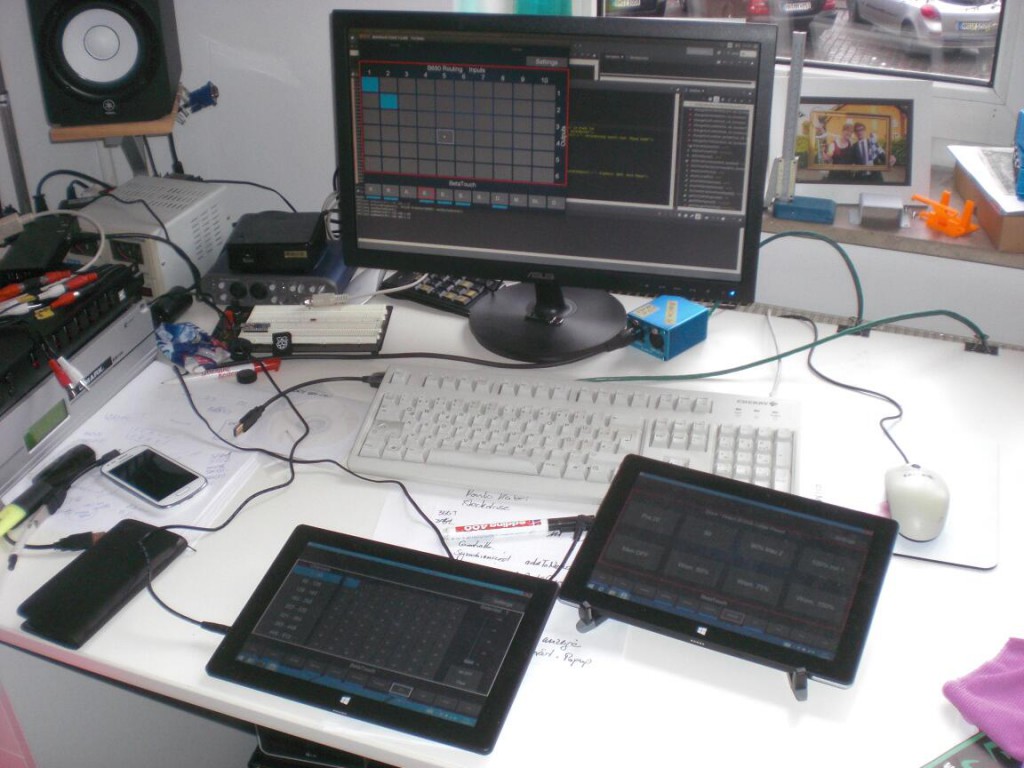
Der ganze Kram, den ich zur Messe nehmen musste: 4 Stück 19 Zoll Geräte (insgesamt 5HE), 2 Tablets, 2 LED PAR56, 2 Laptops, 1 USB Tastatur, 1 USB-auf-4-fach-seriell Wandler, Artnet-DMX Adapter, Netzwerkkabel, USB-Kabel, Zettel, CDs, Sticker, Netzteile, eine Steckdosenleiste, blahblahblah… und ein bisschen Wäsche für eine Woche, … Alles per Bahn.
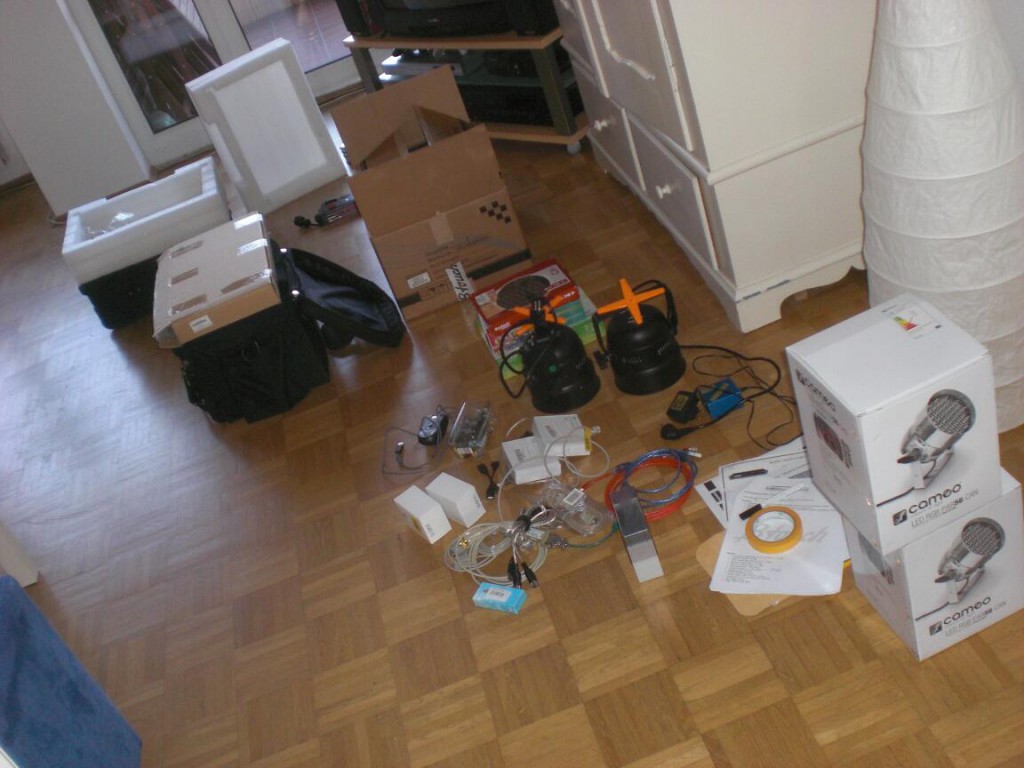
Geht. Was noch fehlt ist der Trolley mit meiner Wäsche (und der Steckdosenleiste), aber es hätte schlimmer kommen können. Nicht sonderlich viel schlimmer, aber … etwas schlimmer.
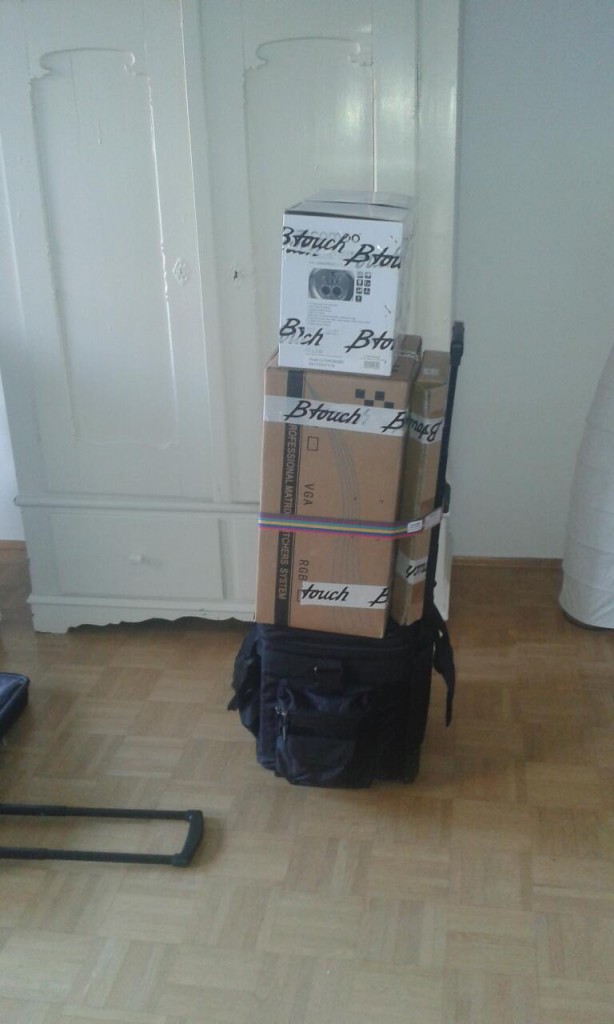
Und schwupp-Di-Wupp war ich in Hamburg Frankfurt.

Anfangs sah das alles noch gar nicht so berauschend aus.
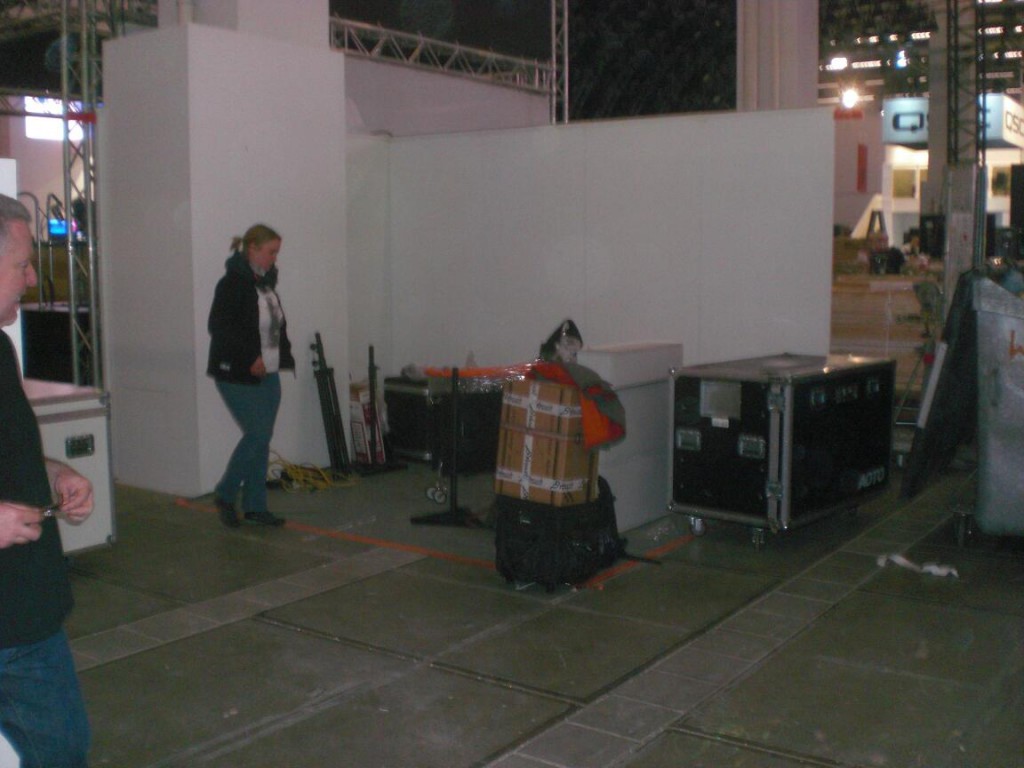
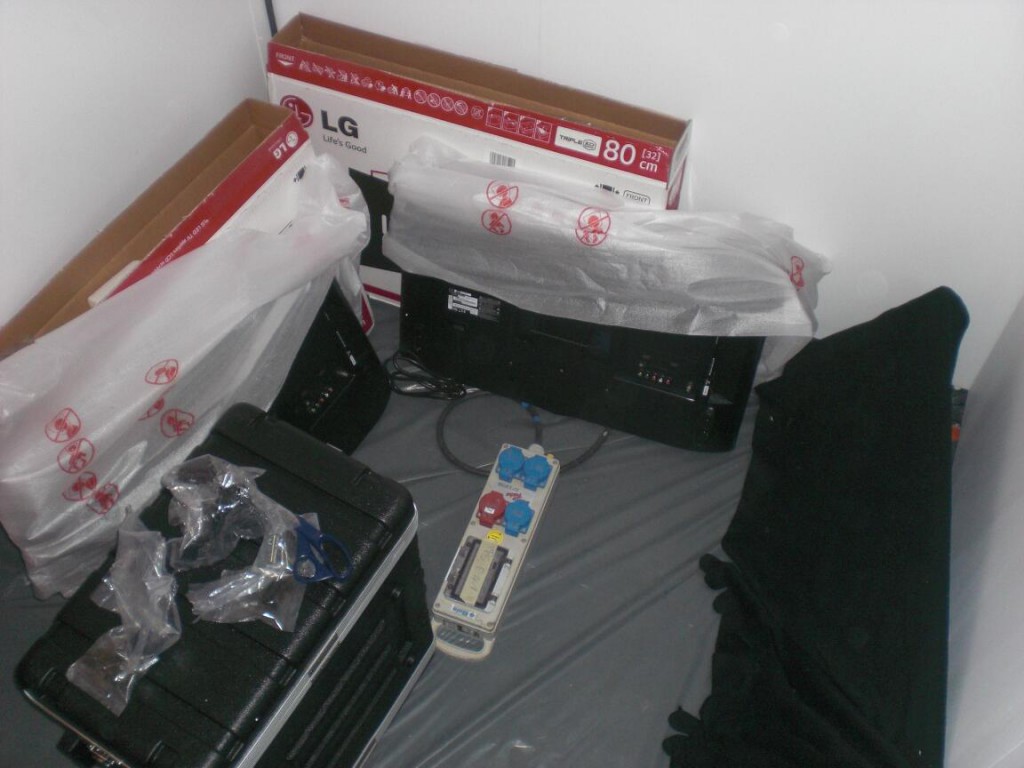
Aaaaber… das wurde noch. Um uns herum waren nur professionell gebaute Stände. Größer, bunter, mehr Zeug. Macht aber nichts. Wir haben es überhaupt nicht auf Laufpublikum und Kantenfummler abgesehen, sondern hatten unsere Termine und wollten einfach präsent sein, also alles cool.

Man macht sich anfangs echt keine Gedanken darum, wie viel Aufwand eigentlich hinter so einem Messestand steckt. Ist ja schließlich nicht nur so, dass man den Stand mitsamt dem eigentlichen Kram aufbauen muss, man muss ja auch passige Präsentationen, Videos, Flyer, Visitenkarten etc. haben. Alles muss 30tausend mal gegengelesen, korrigiert, übersetzt und nochmal korrigiert (und dann nochmal gegengelesen) werden. Nach dem Aufbau ist sowieso alles ganz anders und man muss nochmal ran. Schlau ist, sich nicht vom Messerummel (speziell dem Rummel nach offiziellem Ende des Messetages) unterpflügen zu lassen. Einfach mal nicht immer der letzte auf der Standparty sein….
Und weil wir alles richtig gemacht haben, waren wir entsprechend auffällig im Messeverzeichnis zu finden. Nüchtern betrachtet jetzt nicht soooo das Ding. Das gibt man an die PR Abteilung ab und… ach ja… wir haben keine PR-Abteilung.
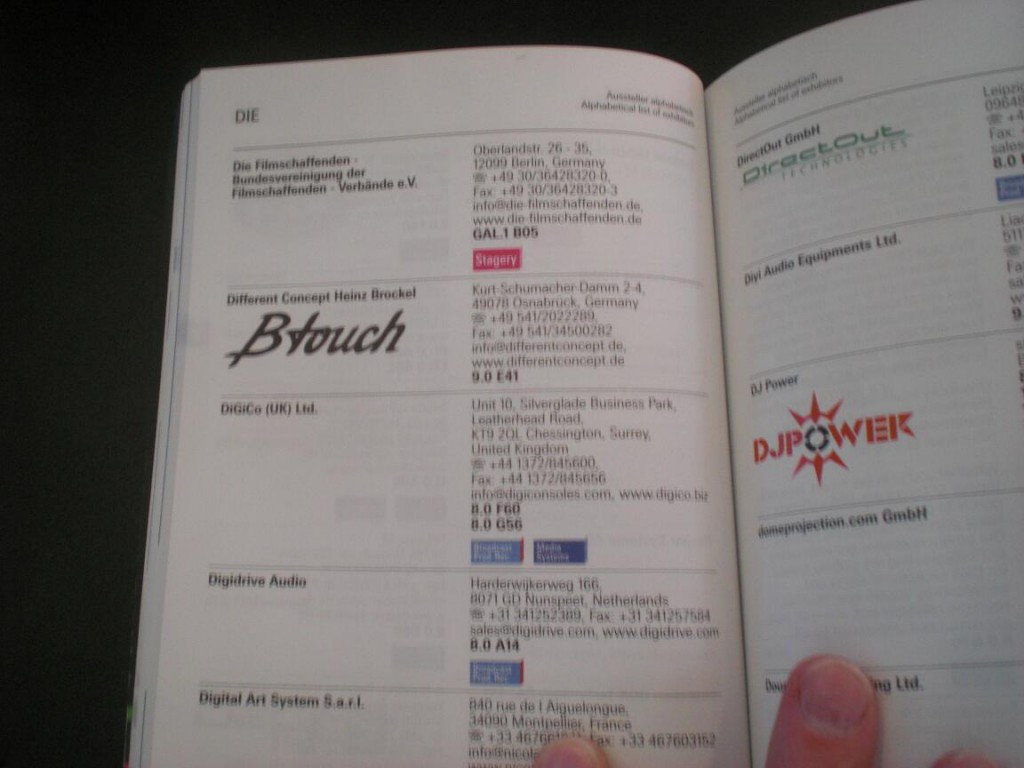
Abends den ganzen Schotter ordentlich anbinden. Man weiß ja nie. Es soll wohl Menschen geben, die mit einer klaren Definition von Eigentumsverhältnissen ihre Probleme haben.
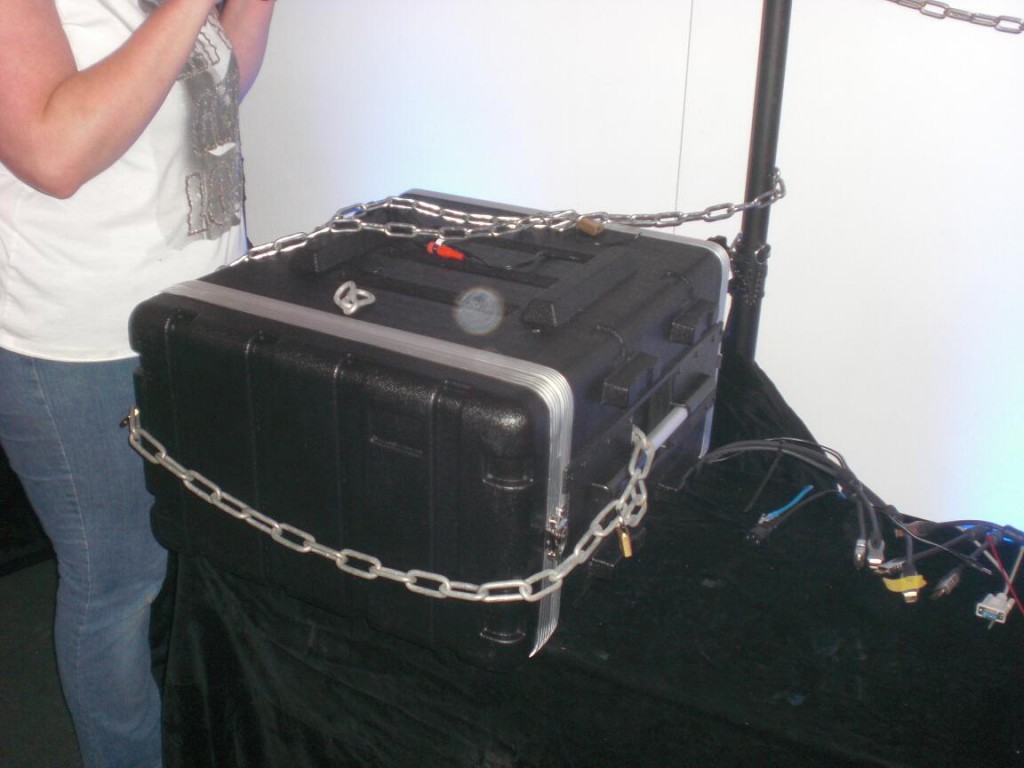
Auch ein Vorteil von so einem kleinen Stand. Man benötigt eben keine 20 Stagehands, um das Ding innerhalb einer halben Stunde abzureißen. Flugs den alten Stand runtergeballert und in den Combi reingemöllert =) .
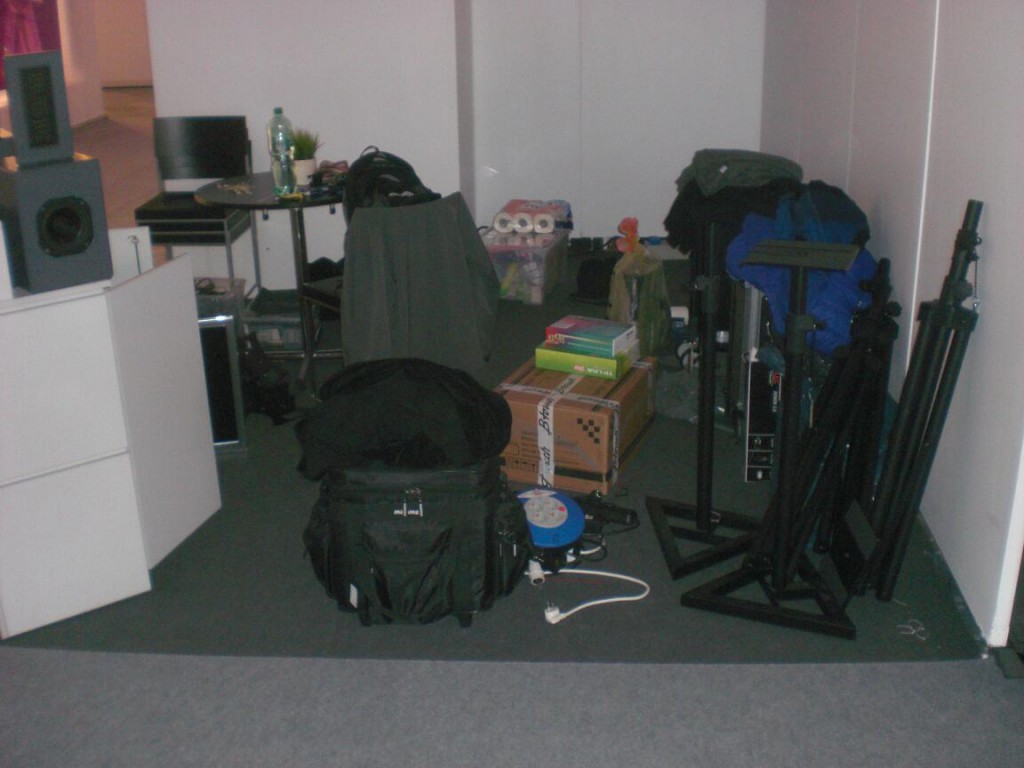
Fazit: Alles richtig gemacht. Alles.
Die beiden Anderen machen gerade die Nachbearbeitung (Kontakte anschreiben, Angebote zusammenstellen, Feedback koordinieren, etc).
Ich gönn’ mir jetzt erst mal eine Woche Nixtun. Also “nix” im Sinne von “nur den einen Hauptjob” und nebenbei ein bisschen Spaß-Programmierung: Es liegt noch ein angefangener Erschütterungssensor-To-Midi-Konverter bei mir herum, der wird jetzt fertiggemacht. Außerdem hab’ ich noch ein bisschen was von meinem Lieblingsbier zuhause.









